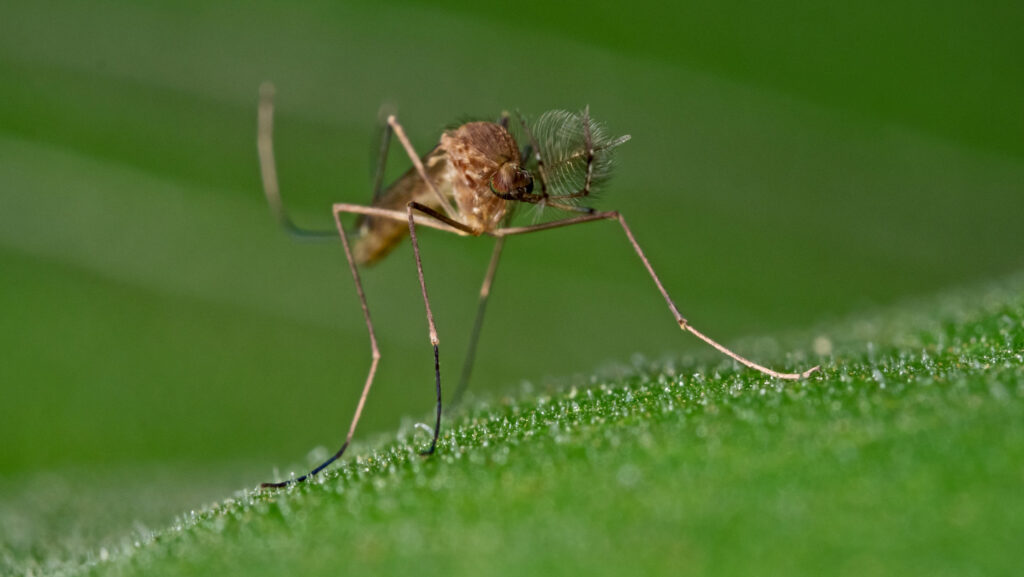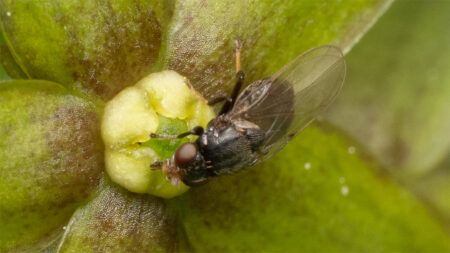Iceland’s first mosquitoes are poised to face a frosty test. Winter is coming, and it’s uncertain whether these newcomers might stick around until spring.
The Nordic island, previously one of the last places on Earth without mosquitoes, hosted at least a few Culiseta annulata mosquitoes this year, the Natural Science Institute of Iceland announced October 21. In mid-October, local resident Björn Hjaltason captured two female and one male mosquito using a ribbon soaked in red wine while on a farm north of the capital, Reykjavík. The ribbon usually attracts moths but also lured the mosquitoes, the first confirmed in Iceland.
Now, only Antarctica is mosquito-free. But there is a kernel of consolation: C. annulata is more pest than peril. The mosquitoes do not transmit human pathogens.
Neither the number of C. annulata flying around Iceland nor how they made it to the island country are known. But human transportation is a probable route, according to the NSII. Airplanes have previously brought mosquitoes into the country, though none sparked a new population. The fact that Hjaltason found females and a male suggests the insects could reproduce.
People have been traveling to Iceland for thousands of years without any documented reports of mosquitoes, says entomologist Jessica Ware of the American Museum of Natural History in New York City. The insects are nearly global, yet “the fact that they didn’t [come to Iceland before], and now they are, makes me think it’s from the climate.”
Mosquito ranges have been expanding around the globe, although the extent to which that spread is linked to climate change is unclear. The Arctic region is warming roughly four times as fast as the global average, and Iceland has faced record-breaking heat this year. Whether the insect invaders will survive an Icelandic winter is still an open question.
Iceland’s winters can be harsh — though relatively mild given how far north the island is — with temperatures hovering around freezing and plenty of wind and snow. But C. annulata adults are no strangers to cold and can probably survive in Icelandic conditions, according to the NSII. These insects are widespread across Europe, including Sweden and Finland. They wait out the winter chill as adults, taking shelter in caves, basements or outbuildings such as barns and sheds.
Shifts in the ranges of species can depend partly on random chance, says Kelsey Lyberger, an ecologist at Arizona State University in Mesa. “If it just so happens that those three individuals don’t make it, or the really small number of individuals that have made it over there don’t survive or don’t reproduce, well, there goes your population.”
One possible barrier to mosquito invasions in Iceland may be that the island freezes and thaws multiple times a year. That may endanger adult mosquitoes emerging from their winter hideouts or threaten other species that overwinter as eggs or larvae.
“Some species of mosquitoes are sensitive to those [temperature] fluctuations,” Lyberger says. But if they survive through winter, and if they have a food source, the insects can persist.
It’s also possible that other insects might follow. “A lot of these insects are climate canaries,” Ware says. Dragonflies, for instance, prey on mosquitoes and can quickly change their habitat in response to climate change. If C. annulata makes a home in Iceland, “I wouldn’t be surprised if you start seeing [the Emperor dragonfly (Anax imperator)] and other dragonflies that have changed their ranges dramatically in other parts of northern Europe.”
Read the full article here















